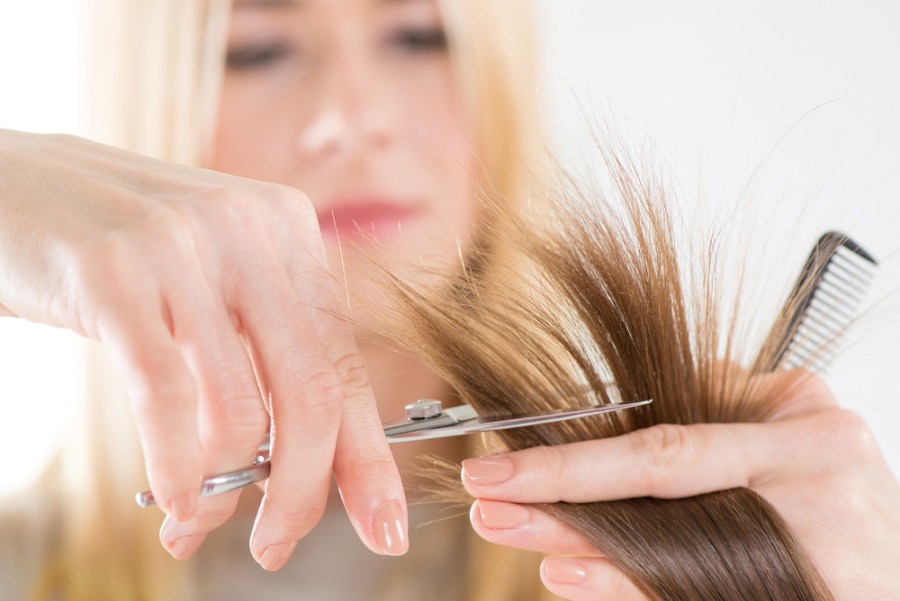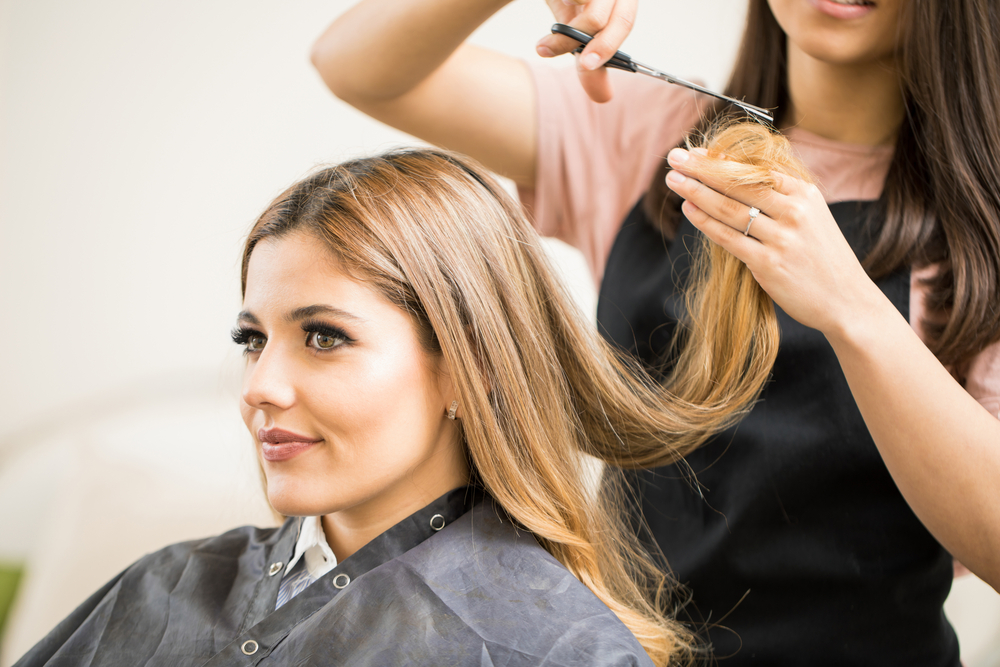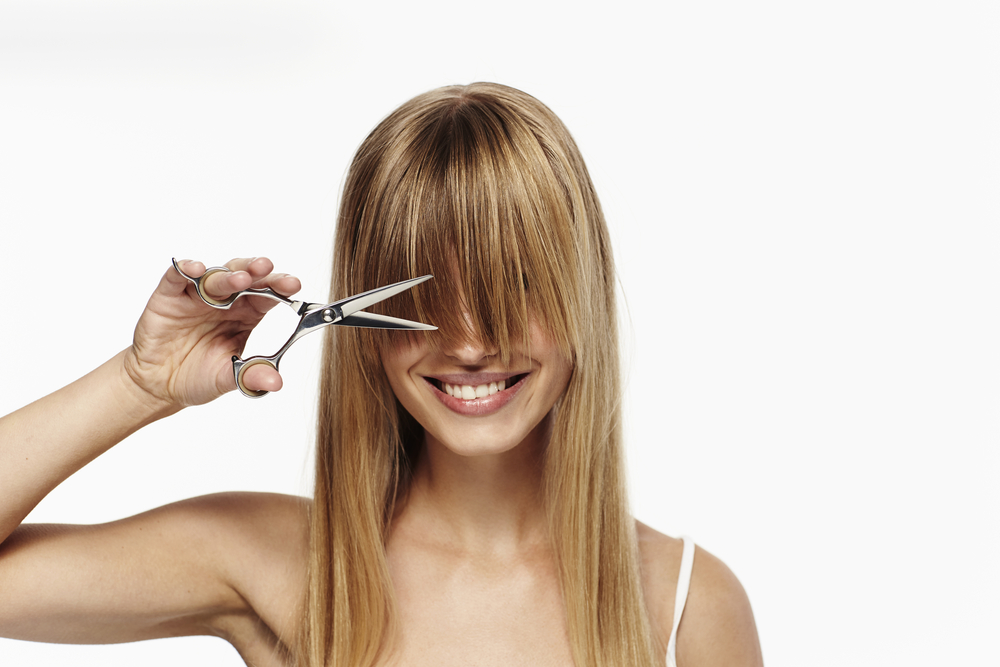It’s what we all dream of – leaving the salon, head held high, checking yourself out as you pass shop windows, feeling and looking amazing! You might be lucky in that you have a stylist who knows you and your hair inside out and can make you feel incredible each and every time you visit. But for many of us, the experience of visiting a salon can be a little more unpredictable.
And when you think that the average woman will have 104 hairstyles in her lifetime, it’s no wonder that things sometimes go awry. Any hairdressing ‘fail’ can feel devastating – after all we do wear our hair every day – but equally a hairdressing ‘win’ can have
a truly positive impact.
According to research, 69 per cent of us feel more attractive after having our hair coloured, and for many of us self-esteem issues are tangled up in our hair – after all, our locks are a fundamental part of feeling, and looking, like ourselves. So when it works, it really works. To guarantee this kind of success, there are steps you can take so that when your hairdresser asks, ‘What can I do for you today?’ you’ll know exactly how to ask for – and get – what you want.
What to tell your hairdresser
All good hair appointments should start with a little ‘you time’ where you tell your stylist how your hair needs to fit into your routine. Does your schedule allow time for styling with products and tools? Or do you need a 60-second fix you can do half asleep while making breakfast? What are your go-to workouts? Hitting the pool a few time a week? This will really affect your colour choices. Or do you need a cut that can easily be swept out of the way as you take on a run or yoga?
Share as much information as you can – stylists love this as it helps them do their job. Similarly, stylists really do appreciate seeing pictures of what you’re after. ‘They’re a great reference for a stylist to understand what it is you like and want,’ explains Andrew Barton, celebrity hairdresser and creative director for Urban Retreat, Harrods.
‘Snaps on phones are OK, but there’s nothing as clear as a paper cut-out of something you like. Collate a few pics – they will be similar but all have some difference. For instance, Jennifer Aniston’s trademark cut comes in all shapes and sizes and has evolved over the years so a stylist can create something based on a cut or colour that works for you.
Pre-appointment, decide what it is you like about the look. Is it the colour or the amount of highlight, is it the fringe or the actual length? Dissect the look and make a few notes about what it is you like as this all helps the consultation process.’
You don’t have to use celebrities for reference either – take in photos of family, friends or even yourself. ‘In consultation I always ask my clients what they like about their hair, and the things they don’t – from there it becomes easier to make a plan,’ adds Andrew. ‘However, don’t be tempted to go too far into the past. You might look back at a picture from when you were younger when you were feeling your best, and were caught unaware laughing – that is a mood, not a hairstyle, which you may not be able to recreate. You need to consider that things may have changed along with your face shape. There is a new version waiting for you instead – an update.’
- Could rotational haircare be good for you?
And while we’re on the past, be honest about the history of your hair. Stylists need to know what treatments, colours and chemical processes such as perming you’ve had done. This is because the average hair on your head has been around for seven to 10 years, so there are layers of styles-gone-by with the potential to affect your new ‘do’.
Don’t forget to mention your personal hair quirks too. No-one knows that cow’s lick or baby-fine side-burns like you do and by bringing them to your hairdresser’s attention they can be accommodated.
How to get the haircut you want
That snip of the scissors can be satisfying… and scary. While colouring can be corrected to an extent fairly swiftly, once your locks have been chopped, you’re looking at a regrowth period of months or even years, as the average person’s hair grows half an inch a month. And talking of inches, everyone’s idea of what exactly this measurement is can be very different once they’re in the salon.
With a few miscommunicated measurements a trim can easily turn into a bob, so Andrew suggests forgetting about inches. ‘The best way to describe how much length to be cut off is to show your stylist with your hands,’ he explains. ‘Touch your collar bone, jawline or shoulders or draw the length with your fingers, this way it could not be clearer. I like to cut a few hairs from the area we’re discussing so my client can see where we’re heading.’
Hair cutting terms to get the look you want
Hair goal: Long, sleek and straight
Cutting terms to use: One length, no layers.
Hair goal: Long-medium, textured with potential to wear wavy
Cutting terms to use: Graduated, long layers.
Hair goal: Medium to short with volume to boost the look
Cutting terms to use: Shorter, uniform layers.
Hair goal: Slick bob
Cutting terms to use: Blunt, one length, blended.
Hair goal: Longer on top than bottom,
Cutting terms to use: Graduated, finer below.
How to choose a hair colour
You’ve never been so spoilt for choice when it comes to colouring your locks. So for this it’s all about pictures, hair history and being descriptive. ‘Thanks to marketing and fierce competition for clients there are constantly new names for different colours – even some hairdressers won’t have heard of them,’ says Adam Reed, award-winning hairdresser and co-founder of Percy & Reed.
‘What you describe may not be what they understand from the technical name so it’s important to translate what you mean through imagery. A picture speaks a thousand words. Lowlights, ombre, balayage, toner, root shadow, gloss, floating lights are all techniques that are open to interpretation. The best thing to do is say exactly what you want in real-life terms. For example, “I want to go lighter around my face as if I’ve been on holiday,” is so much more helpful than saying “I want a vanilla, caramel, rich, deep but natural blonde”.’
Also, discuss with your stylist how you like to wear your hair – do you wear it tied up; where is your parting; do you go for braiding – as this will help get a colour that works for you. Your stylist will then show you swatches of coloured hair so you can come to an understanding. ‘Never be afraid to speak up if you feel the colour choice isn’t right,’ adds Adam. ‘The stylist will be able to tell you how they can tweak it to achieve your desired look.’
How to look after your hair at home
You’ve smashed your salon session and your stylist has given you some hair homework. Here’s what you need to do when you hear them say…
‘Use a colour-friendly shower combo’: Team up Percy & Reed Perfectly Perfecting Wonder Wash Shampoo and Perfectly Perfecting Wonder Care Conditioner (£18 each) as they are packed with hue protectors.
’Prep before heat styling’: Work in Paul Mitchell Neuro Style Blowout Primer (£8.95), which offers thermal protection and smooths.
‘Treat tresses to a deep condition’: Use Andrew Barton SOS Repair Treatment Mask (£4.99) once a week – the Moroccan argan oil heals the hair shaft from the inside out.
‘Thicken hair as you style it’: Mist on Windle & Moodie Fortifying Spray (£18), which gives body while adding shine with honey extract.
‘Avoid split ends and dullness’: Use Living Proof Health Hair Night Cap Overnight Perfector (£30), which reverses styling and lifestyle damage
while you sleep.
‘Use a hair-friendly multipurpose tool’: Invest in a ghd Original Professional Styler (£109.99) as the ceramic, floating plates will never frazzle your locks.









